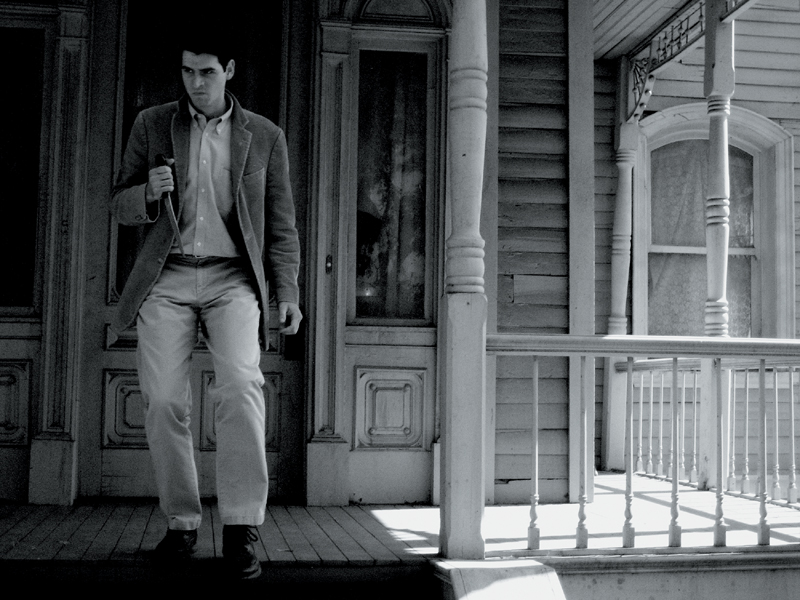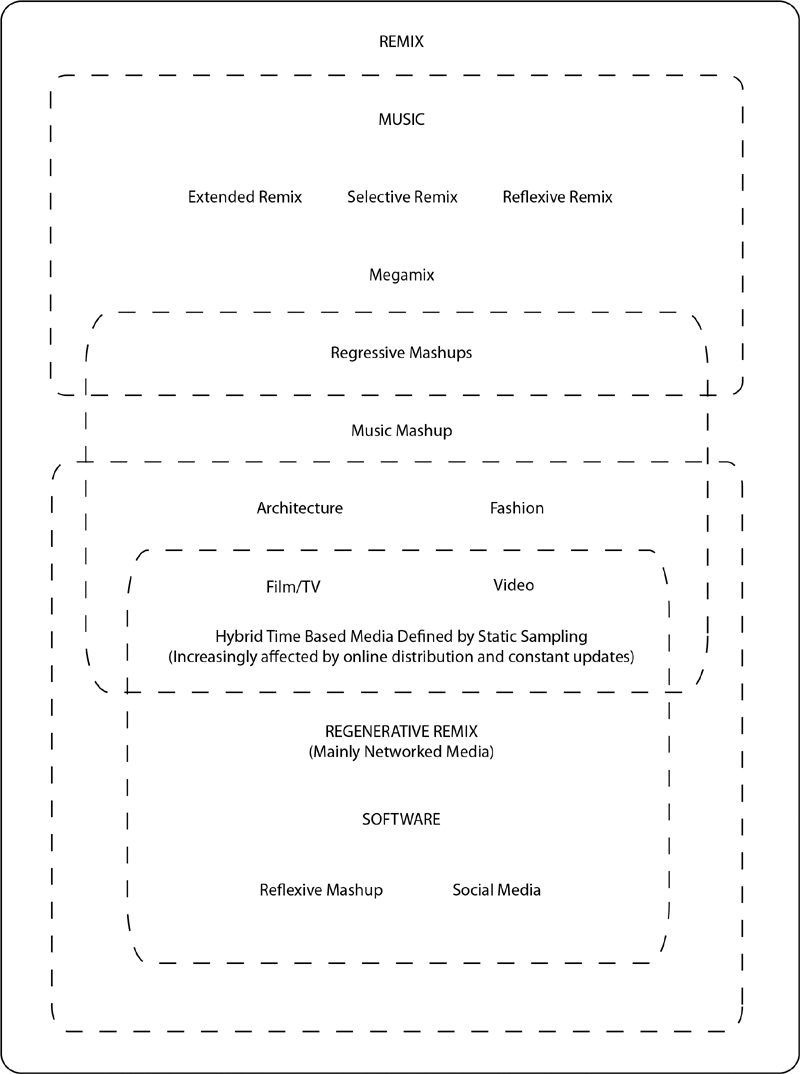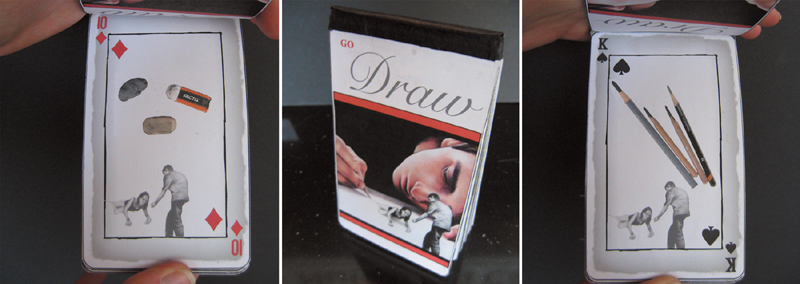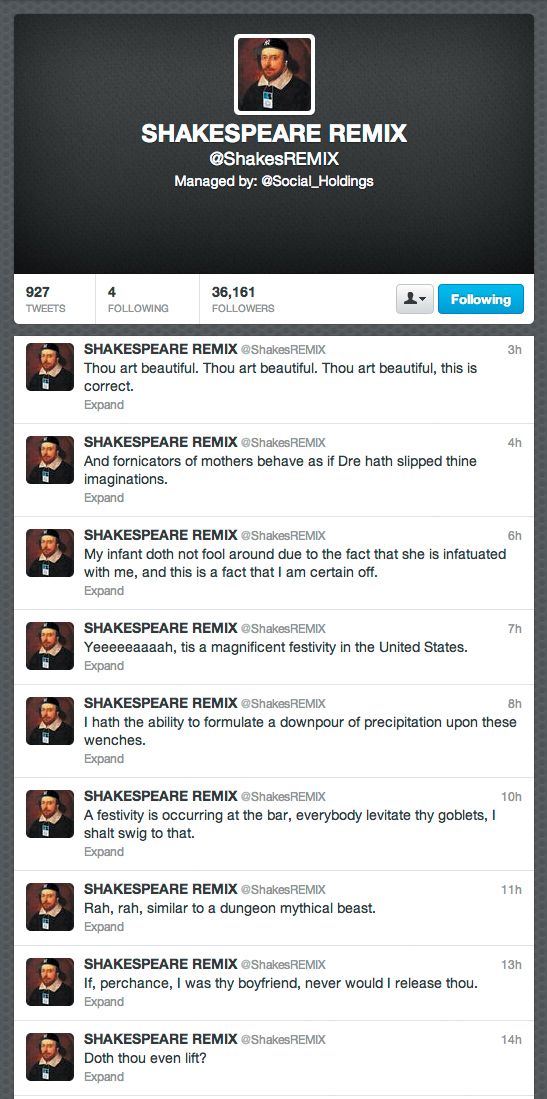Chapter 15. Remix the Web

The exercises in this chapter will provide ideas for projects to help you understand remix as a practice and a discourse. You won’t necessarily need to use your HTML and CSS skills, but you’ll likely develop graphic media for projects to publish on the web.
The exercises in this chapter differ from those in other chapters. Instead of providing you with step-by-step instructions for learning specific tools in Adobe applications, these exercises will prompt you to embark on your own projects using the tools you’ve learned in the preceding 14 chapters. For this reason, the chapter introduction is expanded to include concepts central to the theme of the proposed exercises.
Remix: A Discourse for Cut/Copy and Paste
Eduardo Navas defines remix as both an activity and a discourse, or a form of communication (FIGURE 15.1). He writes:
Generally speaking, remix culture can be defined as a global activity consisting of the creative and efficient exchange of information made possible by digital technologies. Remix, as discourse, is supported by the practice of cut/copy and paste [1].
Eduardo Navas, “Regressive and Reflexive Mashups in Sampling Culture.” In Mashup Cultures, ed. Stefan Sonvilla-Weiss. (New York: Springer Wien, 2010). pg. 159.
You’ve already been cutting (or downloading and selecting), copying, and pasting in many of the previous chapters, so the activity of remixing is not entirely new. However, I delayed introducing Navas’s ideas of remix culture until now for two reasons. First, remix is a practice and discourse that relates to, and relies on, appropriation. To select, copy, and paste, an original work must exist—it’s the thing that undergoes transformation. The postmodern idea of appropriation is understood as a semantic and practical activity—this influences remix culture (see the introduction to Section 3). Finally, in order for your remix to have an audience, it must be easy to find. I can’t think of a better place to find works of remix culture than on the web. Navas explains four basic types of remix: extended, selective, reflexive, and regenerative, all of which are outlined below.
Extended Remix
The extended remix lengthens the work of cultural production to serve a purpose that deviates from the original. A common example might be an extended remix in which a four-minute pop song is transformed into an eight-minute work with additional instrumentals for sample and play in DJ cultures. While this genre of remix may be more evident in music, Douglas Gordon’s 24 Hour Psycho (1993) is a visual installation that extended (or slowed down) Alfred Hitchcock’s classic film Psycho (1960) so that the 109-minute film took 24 hours to view (FIGURE 15.2).

FIGURE 15.2 Aung Myin Ko, Norman Bates in front of the Bates Mansion, as seen during the Psycho section of the Universal Studios Studio Tour in Hollywood (http://en.wikipedia.org/wiki/File:Norman_Bates.jpg).
Selective Remix
When the original material has elements added to it or subtracted from it, Navas labels the remix as selective. Works of collage in which image elements are added to a primary image may fall into this category, such as the extra finger you added to the hoax image in Chapter 7, Repairs and Hoaxes, or the ants and moon on Salvador Dalí’s face that you created in Chapter 8, Select, Copy, Paste, Collage. A selective remix is a combination of elements with the original work, or a distillation of elements from the original that expresses the essential message contained in it.
Reflexive Remix
In a reflexive remix, the transformative work not only adds components to or deletes elements from the original, but it also functions as an allegory. This means that the new work can be interpreted as one that reveals a sort of “hidden meaning” by way of expressing an interpretation of the original. You can find many remix works in fan culture on video sharing websites. In their editorial, “Fan/remix video (a remix),” Julie Levin Russo and Francesca Coppa explain this phenomenon as one in relationship to commercial entertainment media. They write:
Vidding, political remix, DIY media, trailer mashups, tribute videos, memes, machinima, fan films—we are in the midst of an explosion in vernacular creativity that appropriates, celebrates, critiques, and transforms commercial entertainment [2].
Julie Levin Russo and Francesca Coppa, “Fan/remix video (a remix),” Editorial. Transformative Works and Cultures (Vol. 9, 2010), http://journal.transformativeworks.org/index.php/twc/article/view/431/304.
In relationship to photomontages that function as social commentaries, Navas writes:
We believe the image but question it at the same time due to the dual transparency of a montage and the realism expected of a photo-image; the work then gains access to social commentary based on the combination of recognizable images [3].
Eduardo Navas’s article (see Reference 1) was originally published on his website with modifications, http://remixtheory.net/?p=444.
The political Dadaist images explored in the introduction to Section 3 are examples of this type of remix.
Regenerative Remix
The fourth type of remix converts measurable changes that occur in one or more sets of data into visual experiences. In a regenerative remix, two or more elements, each consisting of a data set, and each of which can be updated through networked activity, are combined to show a comparison of data flow. Navas illustrates this concept with the Wikipedia website, whereupon users have constant access to modify or re-create the content of the site’s entries and are able to track amendments to the discussion. This type of remix is inherent to biological systems, as well as interactive systems that rely on data streams.
Exercise 1. Map Mashups
Google Maps was developed as a tool for sharing, reinventing, and customization. If you have programming skills, you might be interested in the Google Map API documentation. If not, you can still rework a Google Map to fit a creative concept. Sign into a Google account; then create and customize a map using Google’s simple tools [5].
A Google Map mashup is a map that showcases additional overlay information to tell a story or serve a niche purpose. There are loads of maps that show how these tools can be employed to explore on Google’s showcase page [6]. Classic examples include HealthMap [7], a great way to find out if the flu is heading in your direction, and HousingMaps [8], a listing of Craigslist entries superimposed on a Google Map. While all of these examples are purposeful, digital artists and designers use the tools for critical or abstract purposes.
http://maps.google.com
[6] https://developers.google.com/showcase/#tags=maps
[7] http://www.healthmap.org/en/
[8] http://www.housing-maps.com
One of my favorite printed maps is Denis Wood’s map of jack-o’-lanterns in the Boylan Heights neighborhood in Raleigh, North Carolina (FIGURE 15.3). It’s not a Google Map mashup (though it easily could be transformed into a customized Google Map). But the analog project demonstrates how to think creatively about visualizing data. The jack-o’-lanterns are visible indicators of otherwise unseen data, as they represent the economic differences between the pricey houses (plenty of pumpkins) and the less expensive houses at the bottom of the hill (fewer pumpkins).

FIGURE 15.3 Denis Wood, Jack-o’-lantern Map in A Narrative Atlas of Boylan Heights. Wood started working on the Atlas in 1975.
As a collaborative class project, I asked a small group of students to determine the boundaries of Southern California. This verbiage is commonly used to describe where my students and I live, yet as a transient, I don’t fully understand what it means—where are its boundaries on the north and east sides (FIGURE 15.4)?

FIGURE 15.4 Rachel Curtis, Ally Fahey, Juan Jimenez, Grisel Leyva, and Elaine Pang, Customized Google Map of Southern California, http://maps.google.com/maps/ms?ie=UTF8&hl=en&msa=0&msid=210285919544961102620.00049bcd2c98eb6014796&z=8, 2011.
For this exercise, customize a Google Map or develop your own mashup. To get started on this exercise, do one of the following:
• Learn how to customize your map: https://developers.google.com/maps/customize.
• Learn how to build a location-based map: https://developers.google.com/maps/location-based-apps.
Exercise 2. Vidding
“Vidding” is specific to fan culture. If you’re a fan of a television show, a movie, or anything visual that you might be able to download, edit, and publish on the web, you may want to join the ranks of vidders. There are many ways to capture online video. If you find a video on YouTube that you want to download and edit, you can enter its URL in the link field at KeepVid (keepvid.com) and then press the white-on-gray Download button. (At the time of this writing, I would warn you not to press the giant, green Download button in the Advertisement section of the page.) You may introduce fictitious characters to one another by editing multiple source videos together. You might create a political video (especially if you’re reading this during a campaign season).
Learn more about vidding in “Vidders Talk Back to Their Pop-Culture Muses,” a February 25, 2009, story by NPR’s Neda Ulaby, at http://www.npr.org/templates/story/story.php?storyId=101154811.
Link
A list of free legal movies might be helpful when you’re looking for source material: http://tech.blorge.com/Structure:%20/2010/08/11/top-40-best-free-legal-movies-you-can-download-right-now/.
The Archive.org video library is full of movies you can download and edit (www.archive.org/details/movies).
For this exercise, modify the narrative of one of your favorite (or least favorite) cinematic experiences. Movies, television shows, webisodes, animations, cartoons—all of these genres are viable original source materials. To get started on this exercise:
• Develop a concept first! You need to have an idea for your new, transformed message before downloading source material.
• Find source material online. Use a site or tool such as KeepVid if your material is on YouTube, download files from Archive.org, or use screen-capturing software such as Snapz Pro. (This software is sold for a reasonable price if you use it frequently; otherwise, you might search for “free screen capturing software.”)
• Edit your remix. You might know how to use Final Cut, Premiere, or iMovie. If not, you can upload your movies to a YouTube user account and edit your remix using YouTube’s free online video editor (http://www.youtube.com/editor).
Learn more about using the YouTube video editor by searching YouTube for video demonstrations of the online editor or on Google’s YouTube Support page at http://support.google.com/youtube/bin/answer.py?hl=en&answer=183851.
Exercise 3. Machinima and Gaming
If video or animation appeals to you and you have a passion for gaming, you might be interested in Machinima. Players record their gaming characters and then edit the source material (from the gaming platform) to create new narratives that take place in the game environment. A classic example is the Rooster Teeth Productions series Red vs. Blue [9], derived mainly from players in the first-person shooter Halo games (FIGURE 15.5). The still-running series began with an internet release in 2003. In the first episode, viewers are introduced to two Red characters who wonder why they are “here.” (One treats this as an existential question, while the other realizes that protecting a desert canyon just because the Blues have their own desert canyon serves an insignificant purpose.) Meanwhile, two Blue characters watch the Reds and annoy one another in a way that captures the banality of endless hours spent waiting in a desert with a fellow player. In the first episode, which is approximately two and a half minutes in length, the two characters/players from each team are developed and a narrative is formulated. You can view the entire series on YouTube.
In Michael Demers’s The Sky Is Falling (A Day in the Life...), the artist captures PlayStation 3 game footage from “Elder Scrolls IV: Oblivion” to show the differences between “game time” and the player’s “real time” experience [10]. Demers noticed that within the game, 30 minutes of “game time” was equivalent to just one minute of “real time.” For this project, Demers created online digital video in 24 two-minute segments that would be keyed to the viewer’s time of day for viewing on the internet (FIGURE 15.6). The original source material is the gaming environment, which undergoes an interesting visual transformation that Demers writes about in the Coda, Revision Practices. This remix, though perhaps slightly more abstract than the Red vs. Blue series, is similar to Red vs. Blue in that both create allegories by way of transformation. Each is a reflexive remix.

FIGURE 15.6 Michael Demers, The Sky Is Falling (A Day in the Life...) Elder Scrolls IV: Oblivion 12:00am to 11:59pm, Heartfire 11, 3E433, Terminal: Internet Based Art, Austin Peay State University, 2010.
If video or video games don’t inspire you, consider remixing a board or card game. With digital tools, you can design any type of game for publication in a variety of formats.
For this exercise, remix a video game to create a machinima screen experience or remix a card game or board game.
• Develop a concept first! You need to have an idea for your new narrative before downloading source material.
• See Exercise 2 for hints on downloading and editing video.
• If you’re remixing card games, consider a children’s game such as Crazy 8s or Go Fish. I’ve assigned students to remix Go Fish by changing the verb (fish) to another of their choosing (FIGURE 15.7). Something from the original should remain intact (for instance, the rules of the game), but the size of the cards and other materials included (or not) with the game’s packaging can be reimagined.
Exercise 4. Social Media Remix
Social media such as Twitter, Instagram, Facebook, and so on can be used as a point of departure, a place for participation, or a way to present remixed projects to online audiences. Tery Amaya’s Vintagrams [11] are a mashup of photographs from the Library of Congress with quippy text overlays she developed to “update” the action in the photos (FIGURES 15.8 AND 15.9).
In Jeremy Hutchinson’s Extra! Extra! Your life, a headline [12], the artist collected a participant’s personal “news” headlines via the project’s Facebook wall and hand-printed them on newspaper advertising boards (FIGURES 15.10 AND 15.11). The project uses social media to challenge analog representations of newsworthy topics, likely filling the streets of Manchester with more advertising billboards than the city had seen in years. The remix activity is a conceptual leap from the gathering of news content on the social media site to the hand-drawn signs displayed at the festival.
For this exercise, utilize social media in a remixed work. Consider some of the following ideas:
• Develop a set of remixed digital works for distribution via social media. The agent of distribution should relate to the concept evoked in your digital works.
• Challenge the ways in which social media websites encourage users to interact. What types of fields and tools are available and which are omitted? See, for instance, Angie Waller’s Myfrienemies [13], Lee Walton’s F’Book, What My Friends Are Doing in Facebook, [14] or @Social_Holdings’ Shakespeare Remix [15] on Twitter (FIGURE 15.12).
 Lab Challenge
Lab Challenge
Use a template or reassemble found code to develop a web page featuring the remix project you created in any of the previous exercises.







